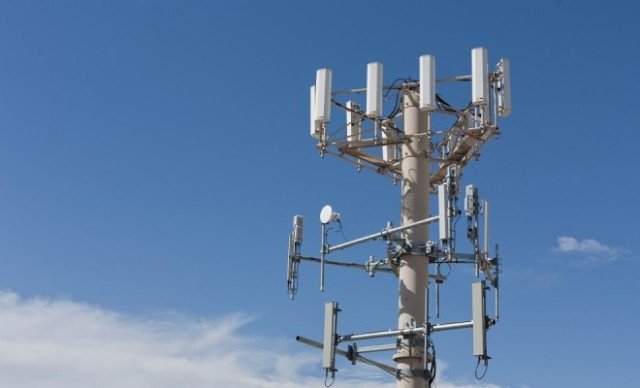Telecom tower company Crown Castle has revealed its strategies to achieve its 2024 revenue goal of $6.34 billion.

Crown Castle has 40,000 telecom towers, 105,000 small cells and 90,000 route miles of fiber to offer the best service to its telecom operator clients.
The senior management team of Crown Castle includes Steven J. Moskowitz (CEO), Daniel K. Schlanger (CFO), Michael J. Kavanagh (COO – Towers), Christopher D. Levendos (COO – Fiber), Edward B. Adams, Jr. (EVP) and Edmond Chan (CIO).
Crown Castle CEO Steven Moskowitz’s strategies are centered around core growth areas and improving operational efficiency. Here’s a breakdown of their key strategies:
# Maximizing Core Leasing Activity Growth
Towers Segment: Despite an expected decline, Crown Castle aims to maximize growth by expanding relationships with wireless carriers, particularly with the accelerated deployment of 5G. They are also capitalizing on rising data consumption in the U.S. to boost demand for tower infrastructure.
Small Cells Segment: As 5G network deployment increases, Crown Castle expects significant growth in small cells. The company plans to focus on high-density urban areas and aims for 10% organic growth. They will also utilize non-recurring revenues from early termination payments to enhance short-term revenue.
Fiber Solutions Segment: Growth in the fiber segment will be driven by expanding networks in metro areas where there’s a demand for high-capacity, low-latency connections. The segment is expected to contribute significantly to the company’s leasing revenue.
# Optimizing Capital Efficiency
Crown Castle is prioritizing capital investments, particularly in the fiber segment, allocating $1.15 billion of their discretionary capital expenditure. They aim to improve returns by focusing on high-demand areas and avoiding over-investment in slower growth segments. This includes optimizing the use of pre-existing assets and reallocating funds where necessary. Crown Castle’s Capex in tower business will be $180 million.
# Driving Site Rental Revenue Growth
Site rental revenues remain central to Crown Castle’s growth strategy. To increase these revenues, Crown Castle is focused on organic growth by deploying new sites and securing long-term contracts. Proper management of one-time revenue impacts, such as prepaid rents and amortization, will be key in maintaining consistent revenue growth.
# Leverage Strategic Review of the Fiber Segment
Crown Castle’s review of its fiber business presents an opportunity to streamline operations, focusing on efficiency and profitability. This includes managing a backlog of contracted nodes and enhancing service offerings to meet rising enterprise demand.
# Seizing 5G and Data Consumption Growth Opportunities
With the expansion of 5G infrastructure, Crown Castle aims to grow its small cells and fiber solutions segments. Strong partnerships with wireless carriers will support this growth, providing stable, recurring revenues through long-term leasing agreements.
# Managing Non-Recurring and One-Time Revenue Impacts
To mitigate the effects of non-recurring revenues, such as early termination payments, Crown Castle plans to actively pursue other opportunities for short-term revenue generation. They are also focusing on organic growth from small cells, minimizing the impact of Sprint cancellations.
# Customer-Centric Initiatives and Operational Excellence
To improve customer retention and reduce churn, Crown Castle will invest in customer service programs and operational excellence. Enhancing response times for deployments and upgrades will help ensure long-term customer satisfaction and revenue growth.
By focusing on these strategic areas, Crown Castle aims to achieve its 2024 revenue target and position itself for sustained growth in the communications infrastructure market.
Challenges
Crown Castle has lowered its full-year 2024 net income forecast, citing a slowdown in tower leasing activity as wireless carriers tighten their budgets.
On Wednesday, the telecommunications infrastructure company revised its projected net income to $1.02 billion, down from its earlier estimate of $1.16 billion.
One major factor contributing to the lowered forecast is the cancellation of 7,000 greenfield small cell nodes, which will result in an asset write-down charge of $125 to $150 million in the fourth quarter. This write-down will negatively impact the company’s annual net income.
The reduced demand for tower leasing is driven by wireless carriers, such as AT&T, T-Mobile, and Verizon, who have tightened their budgets following the initial rollout of the 5G network. The carriers are pulling back on spending, which is affecting companies like Crown Castle that depend heavily on long-term leases for their towers.
In a related development, fiber network owner Zayo Group and private equity firm TPG are competing to acquire Crown Castle’s fiber and wireless assets in a deal valued at nearly $10 billion, according to Reuters news report.
Baburajan Kizhakedath
